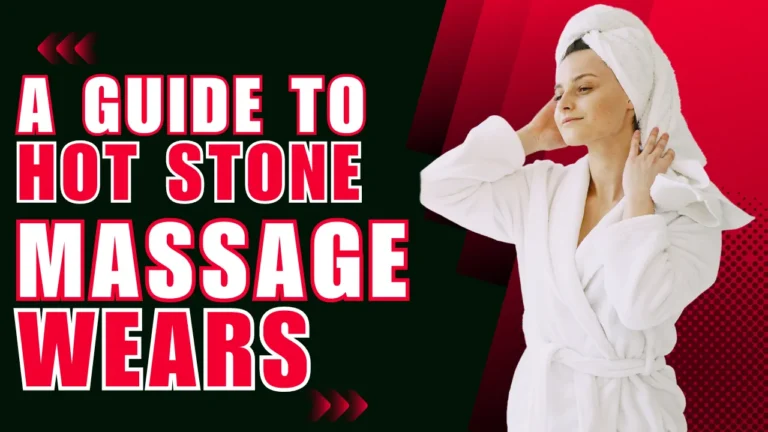In this comprehensive blog post on ‘How to Do Hot Stone Massage‘, you’ll discover:
- How to pick and heat the suitable stones to make your massage relaxing.
- Simple, step-by-step ways to use hot stones, perfect for easing tight shoulders or making tired feet feel better.
- Expert advice on how to do a whole massage from start to finish. This is good for both trained therapists and people trying this at home.
Ready to learn all about hot stone massage? Let’s Jump in and see how you can make your massages really special.
Jump To:
How to Perform Hot Stone Massage – 6 Steps to Follow
Steps 1: Preparation and Setup
let’s set the stage. A great hot stone massage isn’t just about the stones but the entire experience. Every detail counts, from choosing the suitable stones to creating the perfect ambiance. To Do so, you need to:
Set Up the Massage Space:
- Comfortable Environment: Ensure the room is warm and free from drafts, as the client’s body will be more exposed than during a regular massage.
- Ambiance: Create a relaxing atmosphere with dim lighting, soft music, and perhaps aromatherapy, depending on the client’s preferences.
- Massage Table Preparation: Arrange a clean sheet and towels on the massage table. Have extra towels handy for covering the client and handling hot stones.
- Organize Your Tools: Place the stone heater or hot water bath within easy reach, along with massage oils, hand towels, and any other tools you might need.
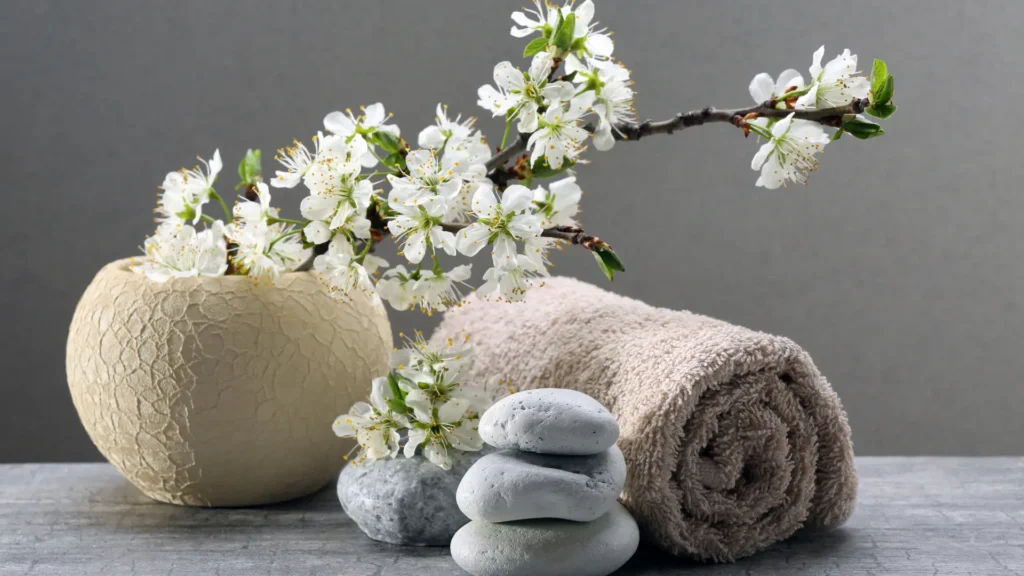
Personal Preparation:
- Hygiene: Ensure your hands are thoroughly washed, and consider using disposable gloves if you are working with someone outside your household.
- Mental Preparation: Be calm and focused, as your state of mind can influence the quality of the massage and the client’s experience.
- Physical Readiness: As a therapist or practitioner, you should be in a comfortable position that allows you to reach and massage without straining.
Client Preparation and Comfort:
- Consult Your Client: Discuss any medical conditions, areas of concern, or preferences with the client.
- Position Your Client: Make sure the client is comfortable on the massage table, using pillows or bolsters for support if necessary.
- Explain the Process: Brief the client on what to expect, especially if they are new to hot stone massage.
With these preparations and setup, you create an optimal environment for a relaxing and effective hot stone massage to enhance the client’s and yourself’s overall experience.

Step 2: Testing Stone Temperature
Now, you may ask how to heat Stones for massage; let’s discover this in this section.
Why Correct Temperature Matters?
- Safety First: The primary reason for testing the stone temperature is to prevent burns or discomfort to the client. Stones that are too hot can cause injury.
- Comfort Level: The ideal temperature of the stones should be soothing and relaxing, not painful or overly intense.
Methods of Testing Temperature:
- Hand Testing: Before placing a stone on the client, hold it in your hand for a few seconds to gauge the heat. Your hands will become more sensitive to temperature with experience.
- Forearm Testing: Another effective method is placing the stone against your forearm. The inner forearm is more sensitive than your hands and can be a better gauge for comfort.
- Using a Thermometer: For a more precise measurement, use a thermometer to check the water temperature in which the stones are heated. I always Aim for a range between 110-130 degrees Fahrenheit, below the recommended temperature between 130 to 145 Fahrenheit.
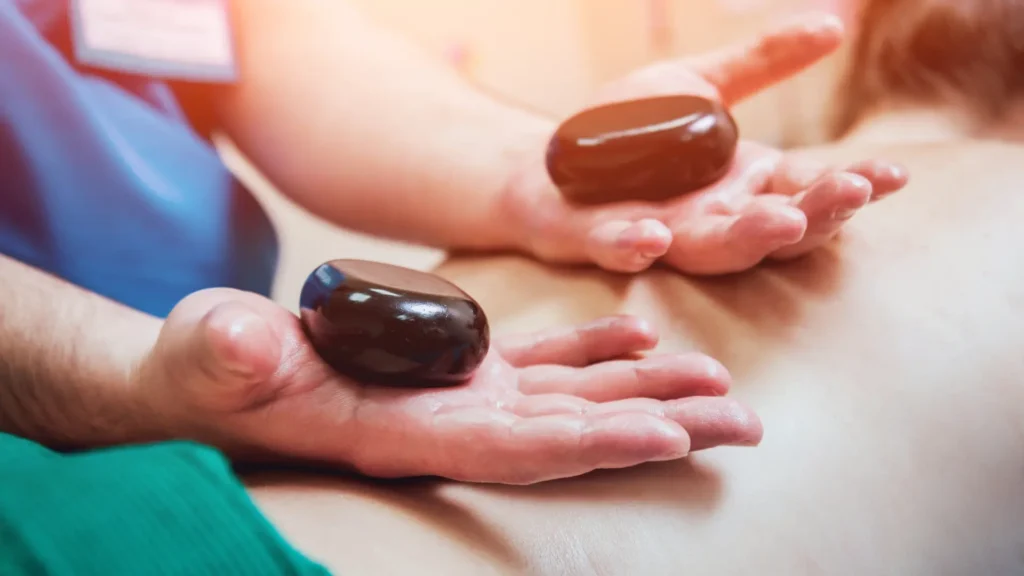
Communicating with the Client or Your Partner:
- Initial Touch: When first placing the stone on the client’s skin, ask for their feedback on the temperature.
- Ongoing Checks: Continue to check in with the client throughout the massage, as sensitivity to heat can change, or the stones may cool over time.
This way, you ensure they are in a comfortable and safe warmth, enhancing the overall effectiveness and safety of the hot stone massage experience.
Step 3: Starting the Massage
It’s time to Start the Hot Stone Massage. Let’s Explore a few instructions to Consider.
Initial Hand Massage:
- Apply Oil: Begin by applying massage oil to the client’s skin. This helps the stones glide more smoothly and prepares the muscles for heat exposure.
- Gentle Strokes: Use your hands to perform gentle strokes on the area you’ll first apply the stones. This step warms up the muscles and acclimatizes the client to your touch.
Introduce the Stones:
- Start Slowly: Introduce the heated stones gradually. Begin with the less sensitive areas, such as the back or soles of the feet.
- First Contact Tips: When placing the stone on the skin for the first time, maintain a hold on it, moving it slightly to get the client accustomed to the heat and sensation.
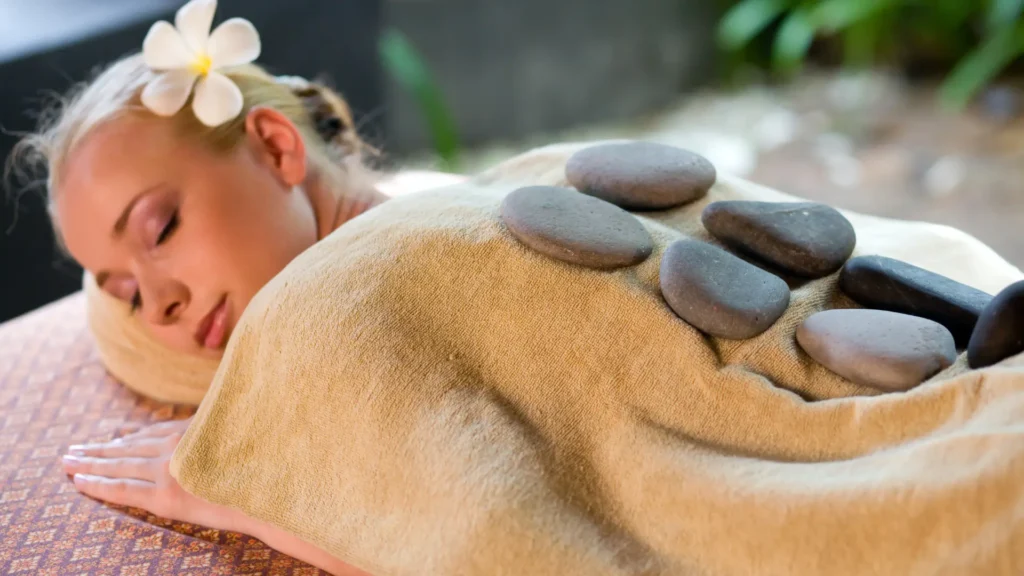
Assess Client’s Comfort:
- Get Feedback: After the initial contact with the stones, ask the client how they feel about the temperature and pressure.
- Make Adjustments: Be prepared to adjust your technique based on the client’s feedback. Everyone’s sensitivity to heat and pressure varies.
Begin the Stone Massage:
- Effleurage with Stones: Start with smooth, gliding strokes (effleurage) with the stones. This technique helps in spreading the warmth and relaxing the muscles.
- Make Consistent Movements: Keep the stones moving to avoid overheating any particular skin area.
Combine Techniques:
- Alternate with Hands: Alternate between using stones and your hands. This variation in touch can enhance the massage experience, providing both the deep warmth of the stones and the direct pressure of hand massage.
- Make Pressure Variation: Use different amounts of pressure depending on your massaging body area. Generally, more pressure can be applied to larger muscle groups like the back and thighs.
By starting the massage like this, you can effectively set the stage for a deeply relaxing and unforgettable hot stone massage experience.
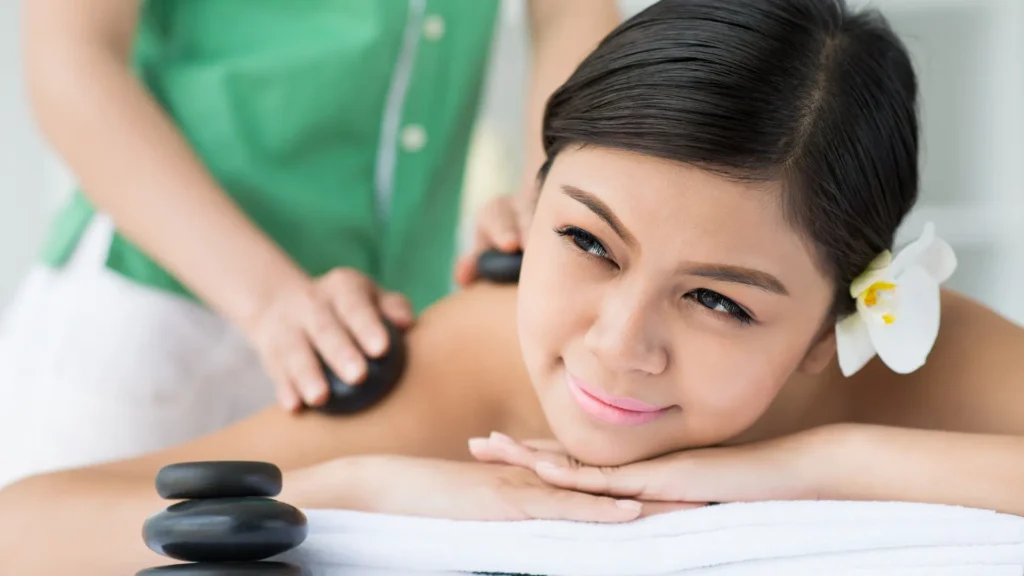
Step 4: Apply Special Hot Stones Massage Techniques
We’ve covered the basics so far; it’s time to Apply some Advanced and most effective techniques. Let’s Explore how:
Glide and Slide Technique:
- Try Smooth Movements: Use the stones to perform smooth, gliding strokes along the muscles. This technique is similar to effleurage in traditional massage.
- Make Pressure Adjustments: Adjust the pressure according to the client’s comfort and the muscle group being worked on.
- Keep Continuous Contact: Aim to maintain constant contact with the client’s skin, creating a seamless flow of movement and heat.
Stone Placement Technique:
- Strategic Placement: Place heated stones at key points on the body, such as along the spine, in the palms of the hands, or between toes. These placements allow the heat to penetrate deeply into the muscles.
- Time Management: Leave the stones in place for a few minutes while massaging other areas. Monitor the client’s response to ensure comfort.
Combining with Hand Massage:
- Integrated Approach: Use the stones as an extension of your hands. Incorporate traditional massage strokes with your hands in areas where stones have been placed or just removed.
- Alternating Techniques: Switch between using stones and hands throughout the session. This combination balances heat, pressure, and manual manipulation for a holistic massage experience.
Specialized Techniques:
- Circular Movements: Use smaller stones to make gentle circular movements in areas like the shoulders, neck, and feet.
- Pointed Pressure: Apply pressure using the edge of the stone for a more targeted effect, particularly useful for muscle knots or tight areas.
- Cooling Stones: Introduce cool stones in areas of inflammation or injury to provide a contrasting sensation, which can be therapeutically beneficial.
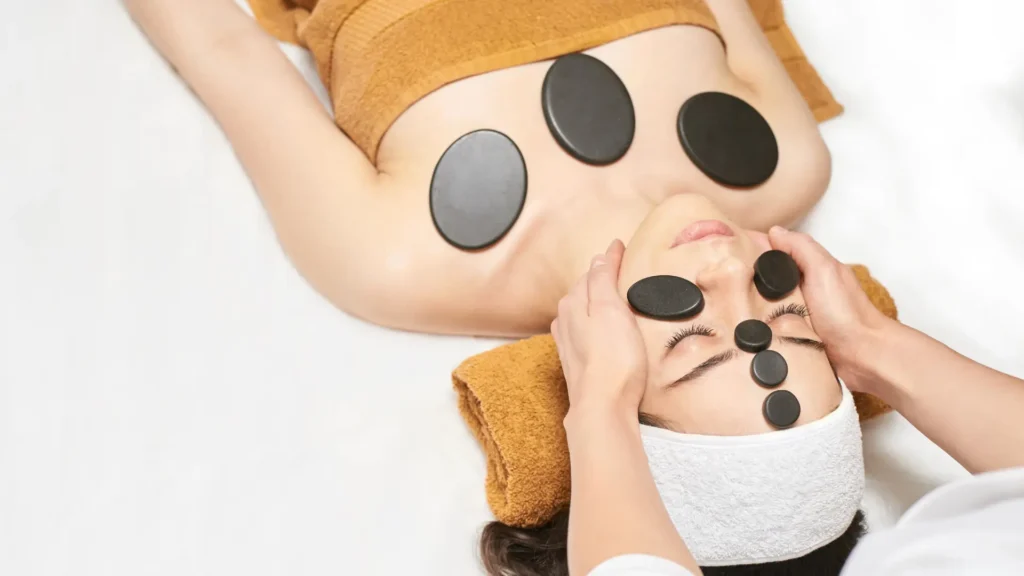
Pressure and Movement Variation:
- Adjust for Sensitivity: Be aware that different body areas have varying sensitivity levels; adjust the pressure and stone size accordingly.
- Slow and Deep: Move the stones slowly and apply more pressure for more profound muscle work.
- Light and Quick: Use lighter pressure and quicker strokes for a relaxing effect.
Client Feedback and Modification:
- Regular Check-Ins: Continuously communicate with the client to ensure the pressure and temperature are comfortable.
- Adapting Techniques: Be prepared to modify techniques based on the client’s feedback and body response.
By mastering these stone massage techniques and adapting them to the client’s needs, the massage becomes a profoundly personalized and therapeutic experience. The key is to combine the warmth and unique pressure of the stones with traditional massage techniques to create a harmonious and effective treatment.
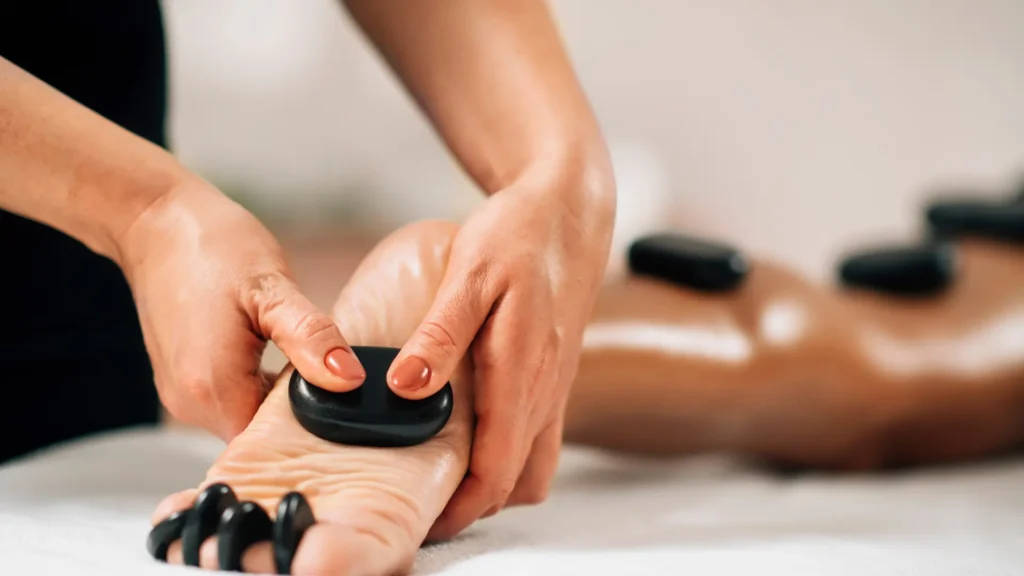
Step 5: Focusing on Different Body Areas – Special Instructions for each Area
it is crucial to know that applying hot stones to each body area needs special instructions, So let’s check out how to perform it accurately on a specific area of your Clients.
Back Massage:
- Large Stones for Broad Areas: Use larger stones to cover the expanse of the back. Start from the lower back, moving upwards to the shoulders with smooth, gliding strokes.
- Special Attention to Tense Areas: Focus on areas of tension, such as the lower back and shoulders. Use circular or sweeping movements to release knots.
- Balanced Placement: Place stones along either side of the spine (avoiding direct contact with the spine) to allow the heat to penetrate deeply into the back muscles.
Shoulders and Neck Massage:
- Smaller Stones for Precision: Utilize smaller stones for the more delicate areas of the neck and shoulders.
- Gentle Movements: Employ soft circular and kneading motions to release tension in these areas, often stiff from daily activities like computer work.
- Attention to Comfort: Be mindful of pressure and heat in these sensitive areas, ensuring the client is always comfortable.
Arms and Hands Massage:
- Long Strokes for Arms: Use a combination of long strokes with the stones to massage the arms, following the muscle fibers from the shoulders down to the wrists.
- Stone Placement in Hands: Place a small warm stone in each hand to soothe and relax the palm muscles, which can be exceptionally comforting.
Legs and Feet Massage:
- Varied Stone Sizes for Legs: Employ both larger and medium-sized stones for the legs, using the larger stones for thigh muscles and smaller ones for calves.
- Gentle Pressure on Feet: Feet are sensitive and can benefit greatly from hot stone massage. Use small stones to massage the feet with light, soothing strokes.
- Focus on Reflex Points: If familiar with reflexology, gently press the stones on reflex points in the feet for added therapeutic benefit.
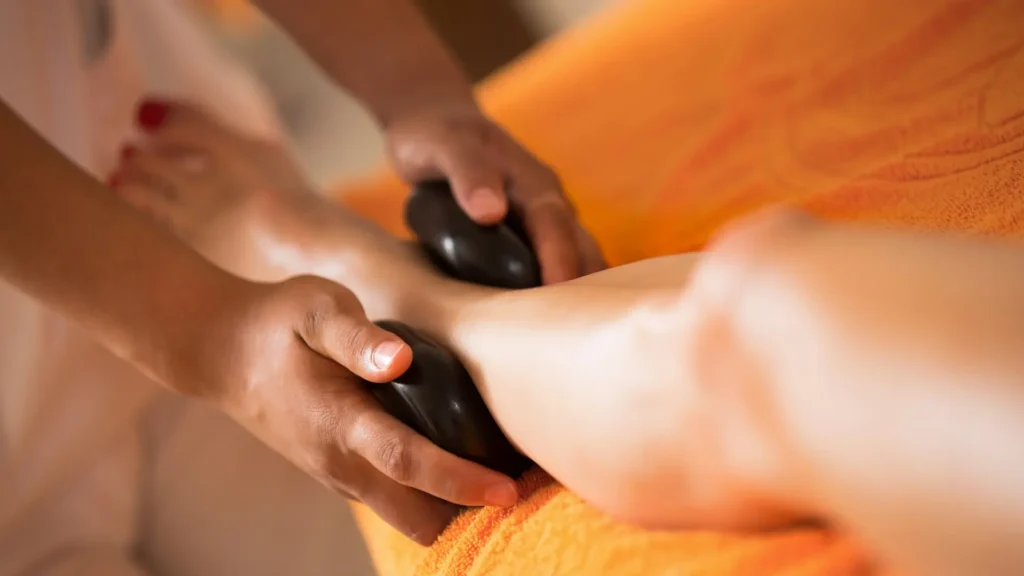
Face and Head Massage:
- Caution and Gentleness: Use extreme care when working on the face and head. Use tiny, lightly heated stones for any facial massage.
- Relaxing Strokes: Gentle strokes on the forehead, along the cheekbones, and jawline can be profoundly relaxing. Avoid using hot stones directly on the face.
Customize the Massage Everytime:
- Client-Specific Adjustments: Tailor the massage to address specific client needs or preferences. For instance, some may require more focus on the back, while others might benefit from extended leg massage.
- Adaptive Techniques: Adjust the size of the stones, the pressure applied, and the massage duration in each area depending on the client’s feedback and physical responses.
Focusing on different body areas with attention to detail, technique, and the client’s specific needs provides holistic treatment and enhances physical and mental relaxation.
Step 6: Conclude the Massage
Everything is perfectly done so far; it’s time for us to Conclude the massage.
Gradual Transition:
- Ease Out of Stone Usage: Begin to phase out hot stones, transitioning back to hands-on massage strokes. This helps the body adjust to the change in sensation and temperature.
- Gentle Strokes: Use gentle, soothing hand strokes to conclude the massage, helping to ground and calm the client after the heat therapy.
Finalize Each Area:
- Back to Start: Revisit each area briefly with light hand strokes, primarily focusing on areas where stones were placed for longer durations.
- Balancing Touch: Ensure the concluding strokes are balanced and symmetrical, providing a sense of closure and completeness to the massage.
Encourage Relaxation:
- Quiet Moments: Allow a few minutes of quiet rest at the end of the massage. This helps the client absorb the full benefits of the treatment and transition smoothly out of the relaxed state.
- Mindful Awakening: Gently alert the client that the massage is concluding, offering a soft reminder to awaken their senses and awareness of the room.
Get Client Feedback and Check-Out:
- Open Dialogue: Ask for feedback on the massage experience, noting any areas of particular enjoyment or discomfort for future reference.
- Future Recommendations: Based on the client’s response, recommend future massage sessions or specific treatments that might be beneficial.
Concluding the massage this way builds your trust in the client and gives a feeling of relaxation and care. Also, the overall experience is enhanced, rejuvenated, and cared for. The final steps also ensure the therapist is prepared and organized for future sessions.
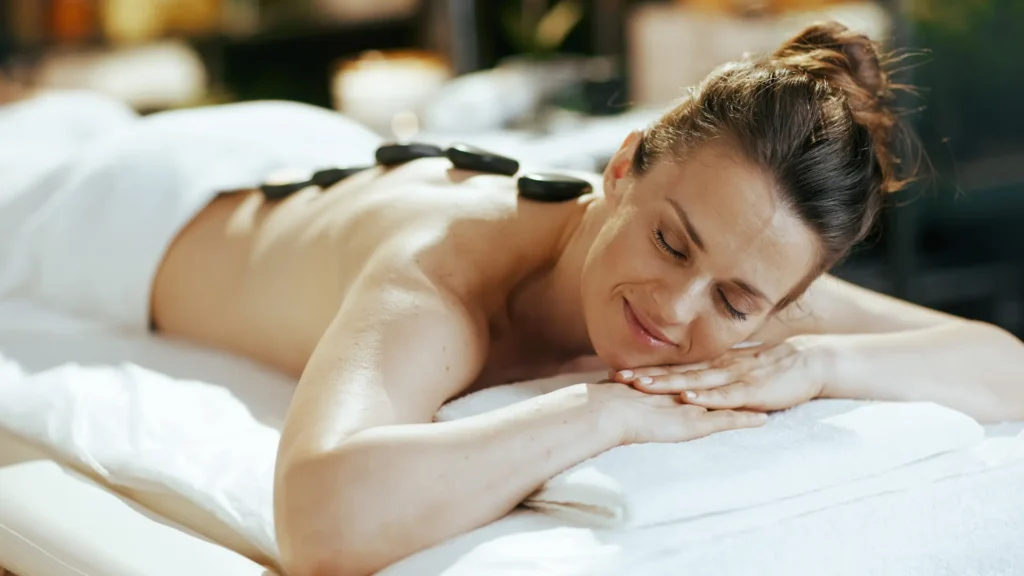
Final words for How to Do Hot Stone Massage
It’s time to end this comprehensive guide on hot stone massage; let’s check out the key insights and takeaways that can enhance your massage experience, whether you’re a seasoned therapist or a home massage enthusiast.
Key Takeaways:
- The Right Stones Matter: The appropriate basalt stones are fundamental for an effective hot stone massage, considering their size and shape.
- Heating is Crucial: Properly heating the stones to a safe and comfortable temperature (110-130 degrees Fahrenheit) is critical to the success of the therapy.
- Technique and Adaptability: Mastering various techniques, such as gliding, placing, and combining stones with hand massage, and adapting these techniques to individual needs enhances the effectiveness of the massage.
- Focus on Different Areas: Tailoring your approach to different body areas ensures a holistic and thorough massage experience, addressing the unique needs of each muscle group.
- Safety and Comfort First: Always prioritize the safety and comfort of the person receiving the massage, from testing stone temperature to adjusting pressure and heat as needed.
- Aftercare is Essential: Post-massage care for both the client and the stones ensures lasting benefits of the massage and longevity.
Remember, Hot stone massage is more than just a relaxing therapy. It’s an art that combines warmth, pressure, and skilled touch to create a deeply soothing experience. No matter if you’re using these techniques in a professional setting or at home, the essence of hot stone massage lies in its ability to harmonize the body and mind.

